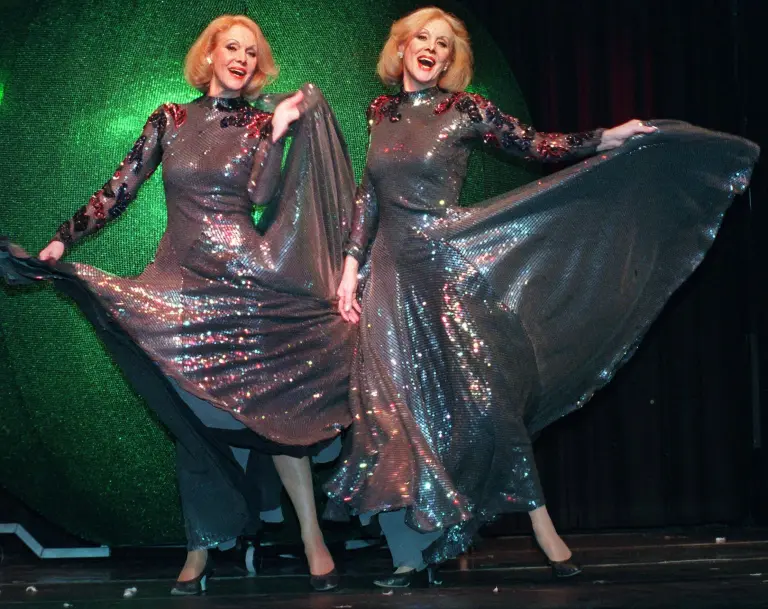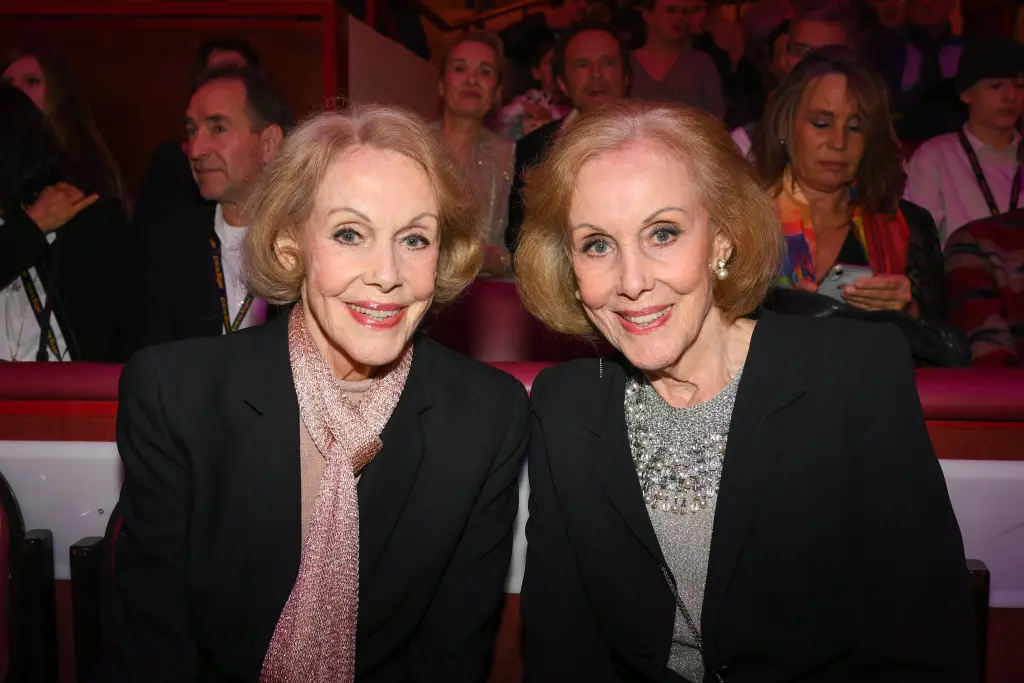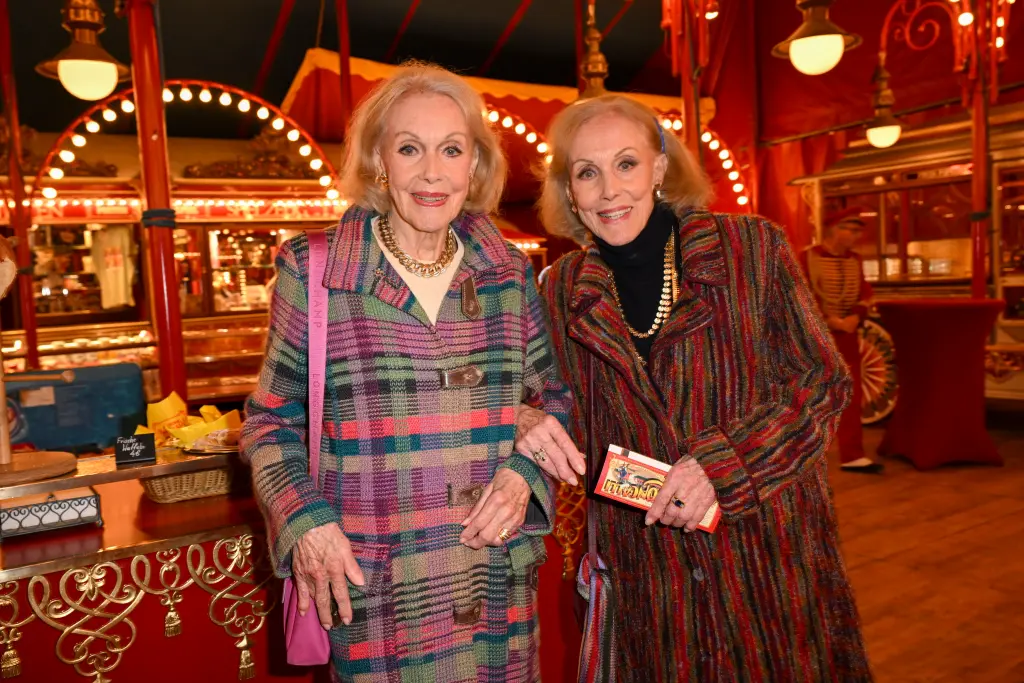They Danced Together for 70 Years — Then the Kessler Twins Chose to Leave the World on the Same Day at 89. Inside the Final Chapter of an Unbreakable Bond
For more than seven decades, Alice and Ellen Kessler stood side by side under bright stage lights, mirroring one another in movement, expression, and spirit. They were born together, rose to fame together, and in their final chapter, they made a decision that stunned the world and spoke to a bond few can ever fully understand. At 89 years old, the legendary performers known simply as “The Kessler Twins” chose to end their lives jointly through legal assisted dying in Switzerland. It was a private decision, revealed only after their deaths, and one that immediately sparked both heartbreak and deep reflection across the entertainment world.

The news was first reported by German outlet Bild and confirmed by multiple European publications. According to the reporting, the twins had reached a stage in life where they were weary of continuing. They suffered no major illnesses, and there were no reports of cognitive decline. Their decision, their friends say, came from a place of autonomy and long-held conviction — that they did not want to live through a long, slow physical decline or face the possibility of being separated by circumstance or failing health. One statement echoed across German media: “They no longer wanted to live, and they chose to end their lives together.” It is an emotional sentence that has stirred a complex mixture of sadness, respect, disbelief, and deep contemplation.

To understand the weight of their final choice, one must first understand who the Kessler Twins were. Born on August 20, 1935, in Nerchau, Germany, just four minutes apart, Alice and Ellen became living icons of post-war European entertainment. They trained in ballet and music from an early age and, as teenagers, caught the attention of producers who saw something rare — not just identical twins, but true stage synchrony, a natural elegance balanced by energy and infectious charm. By the 1950s they had become stars of the legendary Lido in Paris, performing in sequined costumes, feathers, and perfectly mirrored choreography. They embodied glamour at a moment when Europe was rebuilding its sense of joy. Audiences adored them.

Their fame carried them across continents. They appeared on American television. They represented West Germany at the 1959 Eurovision Song Contest. They performed at Radio City Music Hall, on Italian variety shows, and in films. What set them apart was not simply their likeness, but a powerful illusion: two performers functioning as one artistic organism. They dressed alike, sang in harmony, danced in precision, and finished each other’s thoughts without seeming rehearsed. In an industry built on spotlight competition, they built a brand on unity.

Even as standards shifted and variety theater faded, the Kessler name never disappeared. They remained symbols of classical showmanship and elegance, appearing in documentaries, interviews, and nostalgic television specials well into their later years. In Germany and Italy especially, they were beloved — a reminder of a certain era of performance art that no longer exists.
That same unity marked their personal lives. They never married, never lived apart for more than a few days, and never publicly hinted at any desire to separate their careers. They bought homes together, wrote memoirs together, and in their final act, planned their departure from the world together. Their lifelong connection is being described by historians as one of the most enduring public twin bonds ever recorded.

Their deaths have reignited a nuanced discussion across Europe about assisted dying. Switzerland, where they passed away, has long allowed the practice under regulated conditions, and many elderly Europeans travel there for legal end-of-life decisions. It is not a choice that receives tabloid-style sensationalism in much of the region. Instead, it sits at a crossroads of ethics and autonomy — debated, but not ignored. The Kessler Twins’ decision is being treated with both solemnity and a certain cultural understanding. Friends say it was not rash. It was not hidden from those who loved them. It was part of a joint promise they made long ago.
One longtime friend told German media, “They always said they wanted to leave the world like they entered it — hand in hand.” Those who knew them insist there was no despair, but rather clarity, even peace. That does not soften the emotional blow for fans who admired them through black-and-white screens and glossy photographs, but it does reveal something essential: this was not a story of loneliness. It was, instead, a story of authorship over one’s final chapter.

The sisters’ lives were also marked by history. Born during the Third Reich, they grew up in a divided Germany and eventually became cultural ambassadors for the optimism of post-war Europe. They were praised by politicians, adored by designers, and honored in multiple countries. In 2009, both received the Order of Merit from the Federal Republic of Germany — one of the nation’s highest civilian awards. Even in their eighties, they attended cultural galas, fashion events, and charity programs dressed in matching coats and bright lipstick, radiating the timeless glamour that defined them.
What makes their passing so emotionally charged is the kind of legacy they leave behind. Unlike many performers, they did not leave behind scandal, fractured families, or a complicated public story. Their narrative is unusually clean: two women, devoted to art, who lived without significant controversy, remained close to each other, and stepped away from the public eye on their own terms. They died without illness dominating their final months. That is rare.

Still, news of any assisted death comes with responsibility, especially for publications. Mental-health advocates have emphasized the importance of framing this story carefully. The Kessler Twins were nearly ninety years old, living in a country where assisted dying is legal under strict supervision, and their case does not mirror circumstances faced by most people. There is no evidence of untreated depression or coercion. Their decision was grounded in age, autonomy, and a lifelong pact. Their story must not be interpreted as a model, but rather as a unique personal decision made under legal medical guidance in a region where the practice is regulated.
Across social media, fans have been posting clips of the twins’ more famous performances: their Eurovision staging, their appearances on Italian television, the glamorous photographs taken at Paris revue theaters. One comment circulating widely reads, “They arrived in this life like a duet, and they left as one final performance.” Another says simply: “They kept their promise to each other.”
For those who knew them personally, their deaths are not defined by shock but by respect. They lived long, healthy, artistically rich lives. They were not isolated. They were not forgotten. They were not suffering in hospitals or forced into care homes. They were private women who made a final private decision, and only afterward did the world learn their story.
Their ashes will reportedly be buried together, as they always intended, next to their mother and a beloved family dog. That detail, confirmed by multiple German outlets earlier this year, adds yet another layer of symmetry to their lives. Even in death, they chose closeness.
And so the curtain falls on a story unlike any other in modern pop-culture history. Two sisters born into a dark era of European history, who transformed themselves into symbols of beauty and optimism, remained unshakably bonded for nearly nine decades, and left the world on their own terms. Their final decision will be debated, examined, and emotionally interpreted for years to come. But what will remain unquestioned is the essence of who they were: partners in art, partners in life, partners until the last moment.
Alice and Ellen Kessler did not simply perform as one. They lived as one. They decided as one. And they will be remembered — not for the way they died, but for the grace, elegance, and unbreakable twinship that defined every chapter of their lives.



